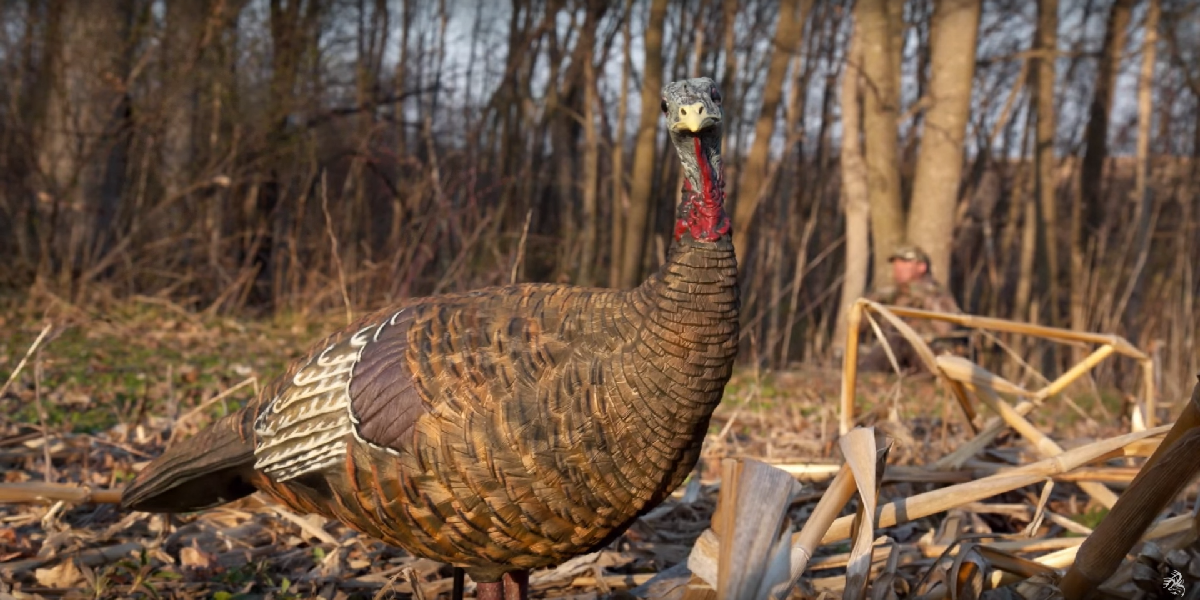The staple of all turkey decoy setups is the lone hen. It’s what the tom wants and expects to see if he’s hearing your calls, so give him what he wants.
Advantages
- Easy to carry/pack
- Fast setup
- Safe and effective
- Great visual
Disadvantages
- Toms may expect hen to come to him
- Smaller visual
Watch this how-to video as Pat Reeve, host of Driven with Pat & Nicole, shows you exactly how to use a lone hen decoy.
When to use a lone hen decoy
There’s not really a bad time to use a lone hen when you are turkey hunting because it’s a safe visual. It shouldn’t deter a tom, but at the same time it probably won’t bring him in running like an intruding gobbler might. Bottom line is it’s safe and effective.
A lone hen is perfect for the run and gun turkey hunter, as it’s simple to set up and easy to tote around. It works great when you’re hunting timber as your calls will likely bring the gobbler in and the decoy will provide that up close visual to set him up for his last steps.
Another great time to use a lone hen decoy is later on in the season when hens start to nest. As hens become harder to find for the toms, the sight of a lone hen will often trick that lovesick bird into thinking he finally found a hen by herself . . . GAME OVER!
When you go to setup a lone hen, there’s really not much to it: put it in a place it can be seen, don’t stake it too high, and don’t put it in the alert position. Typically, I’ll go with either a hen in the semi-relaxed position or feeding position. As long as the head and neck aren’t fully extended, you should be in the clear.
Other Killer Turkey Decoy Setups
–When to use a Full Strut + Breeding Hen







